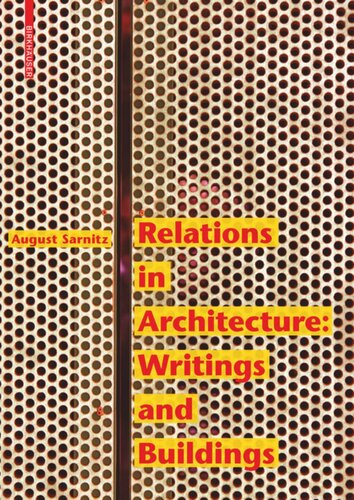

Most ebook files are in PDF format, so you can easily read them using various software such as Foxit Reader or directly on the Google Chrome browser.
Some ebook files are released by publishers in other formats such as .awz, .mobi, .epub, .fb2, etc. You may need to install specific software to read these formats on mobile/PC, such as Calibre.
Please read the tutorial at this link: https://ebookbell.com/faq
We offer FREE conversion to the popular formats you request; however, this may take some time. Therefore, right after payment, please email us, and we will try to provide the service as quickly as possible.
For some exceptional file formats or broken links (if any), please refrain from opening any disputes. Instead, email us first, and we will try to assist within a maximum of 6 hours.
EbookBell Team

4.8
84 reviewsThe title of the book sets the two fields of activity pursued by the architect, architectural historian and theorist August Sarnitz – building and writing – in a reciprocal relation: the context to what has been built emerges in the process of writing, just as the context to what has been written emerges in the process of building.
The structure of the book follows precisely this reciprocity: an essay about architectural history and Big Data is followed by three on the topics of urban development, social housing, and the fiction of space. A number of influential Viennese architects appear as well: Frank, Kiesler, Hollein and Prix. The topics of housing, design and furniture are all illustrated with Sarnitz’s own projects; the end of the book is dedicated to architectural photography, which is especially important to Sarnitz in his capacity as publicist.
The richly illustrated book is the first to document Sarnitz’s work as author, designer, exhibition designer, architect and photographer.